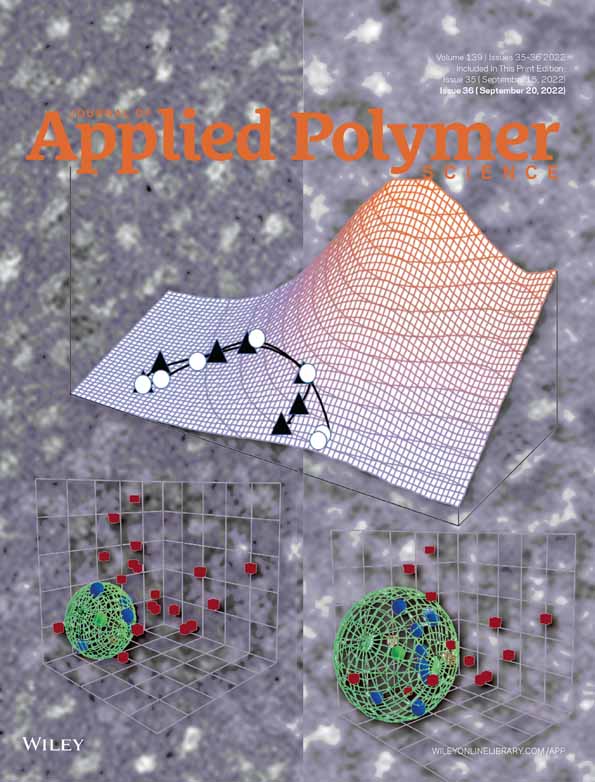Synthesis and flame retardant behavior of siloxane functionalized polyethylene
Abstract
To improve the flame retardancy of polyethyelene (PE), this work realized an effective in-situ synthesis of siloxane functionalized PE via continuous process with two stages: in the first stage, reactive olefin monomers containing dichlorosilane group were designed and utilized in ethylene copolymerization catalyzed by Ziegler-Natta catalyst; in the second stage, by injecting dimethylsilanediol (DMS) directly into the unterminated polymerization solution, siloxane was grafted onto PE side group via the reaction between the pendant chlorosilane groups on PE and hydroxyl on DMS. Owing to the carbonization effect of silica produced by siloxane combustion, the combustion residue of PE was significantly increased to 20.8 wt% in the TGA test after grafting 0.58 mol% DMS. The siloxane functionalized PE was then added into PE/magnesium hydroxide (MH) composites to investigate the materials burning behavior. By grafting 0.15 wt% siloxane, the limited oxygen index of PE was increased from 18% to 21% and that of PE/MH increased from 28% to 30%, indicating the flame retardancy of PE was improved with grafted siloxane modification. It was also found that the nanoscale silica in-situ generated by the graft siloxane groups efficiently assisted the formation of a dense residual layer of MgO and amorphous carbon.
Open Research
DATA AVAILABILITY STATEMENT
The data that support the findings of this study are available from the corresponding author upon reasonable request.




